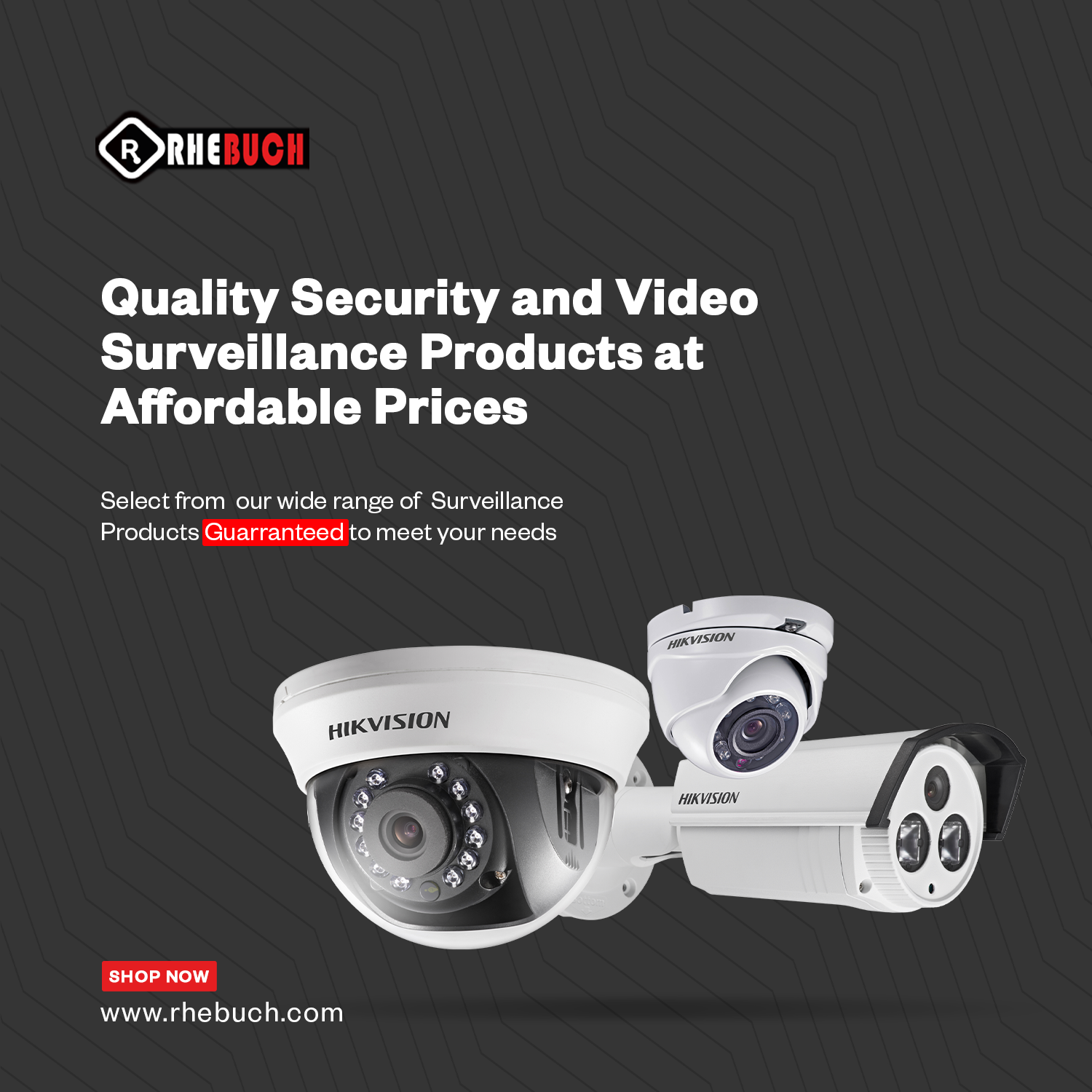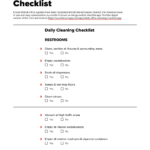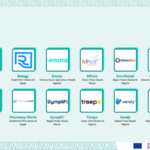BUSINESS
Strategies For Effective Use of Educational Mobile Apps

Strategies For Effective Use of Educational Mobile Apps
Educational applications are now important resources for improving in-class instruction as technology continues to revolutionize education. These educational applications help students learn by providing interactive and interesting learning opportunities. But merely adding educational apps to the curriculum is insufficient. This article offers detailed advice on how to use educational apps most effectively in the classroom to improve student engagement and learning outcomes: STRATEGIES FOR EFFECTIVE USE OF EDUCATIONAL MOBILE APPS IN THE CLASSROOM: ENHANCING LEARNING EXPERIENCES.
Meaning and Background of Educational Mobile App
A software program created expressly with educational objectives is known as an educational app. It is a digital technology that supports educational activities, facilitates learning, and distributes instructional content via a computer or a mobile device.
From young children to adults, educational applications can cover a wide range of topics and target different age groups. These apps are meant to improve by providing engaging activities, interactive content, and individualized learning opportunities to enhance the learning process.
The following are the main qualities and advantages of educational apps:
- Content Delivery: Access to a variety of educational resources, such as textbooks, videos, tests, and interactive lessons, is made possible via educational applications. They provide a platform for distributing instructional materials in a multimedia style, enhancing learning through interaction and engagement.
- Personalization And Adaptive Learning: A lot of educational apps use adaptive learning algorithms, which modify the material and learning processes according to the requirements, development, and preferences of each student. A more effective and efficient learning experience is made possible by this tailored approach, which enables learners to concentrate on their particular areas needing improvement.
- Interactivity And Engagement: Interactive components seen in games, simulations, and educational apps are frequently used. to increase interest and make learning more enjoyable, use riddles and tests. These interactive elements can increase motivation and improve information retention in students.
- Accessibility And Adaptability: As long as there is an internet connection or the app is available offline, educational apps can be utilized whenever and anywhere. This adaptability makes learning more accessible to a larger range of people by allowing students to interact with instructional content at their own pace and convenience.
- Progress Monitoring And Performance Evaluation: A lot of educational applications have tools for monitoring user progress and giving constructive criticism. Self-assessment and self-directed learning are made possible by the ability for learners to track their accomplishments, and progress, and receive feedback or ideas for improvement.
- Working Together And Communicating: Some educational applications provide tools that communication and cooperation between peers, teachers, and students. In addition to building a sense of community and facilitating contact outside of the conventional classroom setting, this encourages collaboration, peer learning, and information sharing.
- Support For Education And Additional Learning: Educational apps can be used as an additional learning tool, offering more materials and assistance outside of the classroom. They can supplement classroom instruction, offer extra practice, and offer remedial assistance to those who need it.
Strategies On How To Use Educational Mobile Apps in Class Rooms Effectively
- Clearly Define Learning Objectives: Educators should make sure that they are crystal clear about the learning goals they hope to achieve before incorporating educational apps. Teachers may make sure that app activities have a purpose and directly benefit students’ academic development by tying app usage to specified goals. Learning goals should be quantifiable so that teachers can monitor students’ development and assess the success of app-based learning.
- Assess App Quality and Alignment: With so many educational applications on the market, it’s important to determine how well they meet curricula standards. In order to complement specific learning objectives, age-appropriate, content-rich apps should be chosen by teachers. Apps can be made suitable for classroom usage by reading reviews, talking to colleagues, and testing them before use.
- Plan App Integration and Activities: Careful planning is necessary for successful app integration. Instead of completely replacing current teaching methodologies and activities, teachers should think about how apps may supplement them. Creating app-based exercises that encourage teamwork, critical thinking, and problem-solving can boost student engagement and advance comprehension. Apps can promote active learning by being incorporated into project-based learning, small group discussions, or independent practice.
- Provide Clear Instructions and Orientation: Teachers should offer clear instructions and orientation sessions to encourage successful app usage. Students can use an app efficiently on their own if you demonstrate how to utilize it, how to access particular features or material, and how to perform tasks. To assist students in using apps, teachers can think about developing step-by-step instructions, video tutorials, or peer mentoring programs.
- Instructional Differentiation: Education is a powerful tool for assisting differentiated training. Based on the skills, weaknesses, and interests of each student, teachers can use apps to tailor learning experiences. Apps with adaptive capabilities that change the level of difficulty or offer extra assistance can meet the different needs of individual pupils. Teachers can overcome any knowledge gaps by keeping track of app-based progress and giving prompt feedback.
- Encourage Discussion And Cooperation: Collaboration and conversation are still essential elements of successful learning, even in the digital age. Peer-to-peer learning and communication skills can be improved by including educational apps that promote cooperative activities, like online group projects or interactive tests. Student’s grasp of the subject topic is deepened when teachers involve them in reflective discussions regarding their app experiences.
- Check for Understanding in Students: observing a student It’s important to monitor students’ development and gauge their conceptual knowledge while utilizing educational apps. To evaluate the learning progress of their students, teachers can employ additional exams or integrated tests found in apps. This information can inform instructional choices, point out areas that need reinforcement or intervention, and show how well an app supports student learning.
- Professional Communities for Learning and Development: For teachers to successfully use educational apps in the classroom, they need to regularly participate in professional development opportunities centred on educational technology and app integration. Teachers can share best practices, swap ideas, and talk about difficulties integrating educational apps through collaborative learning communities, both on- and off-campus. A good app integration experience is ensured by ongoing learning and development in relation to digital tools.
The Disadvantages of Educational Mobile Apps in ClassRooms
While there are several advantages to Using educational apps in classrooms could have some unfavorable effects as well:
- Distraction: Just like any other digital tool, educational applications can divert students’ attention. The inclusion of games, social media tools, and other interactive elements increases the risk of pupils becoming easily distracted from the actual instructional material and concentrating more on the entertaining portions.
- Over-reliance On Technology: Using educational applications too frequently can result in a reliance on technology for learning. This over-reliance could make it harder for pupils to learn using more conventional techniques or critical thinking abilities that don’t use technology.
- Lack Of Face-to-face Connection: Educational applications frequently encourage solitary learning, which might restrict student collaboration and social interaction in a classroom environment. lack of in-person communication may impact how well a person develops their social and communication skills.
- Technical Concerns And Restrictions: Because educational apps rely on technology, technical problems like poor internet connectivity, broken devices, or software bugs might interfere with learning. Inequalities and inequities in the classroom may also result from different students’ access to devices or unreliable internet connections.
- Simplicated Learning Experience: Although educational apps aim to make learning more dynamic and interesting, there is a chance that the content will be oversimplified or turned into a game, losing the depth and complexity of conventional educational resources. This can result in a superficial comprehension of the subject.
- Lack Of Personalization: Despite the fact that numerous educational apps assert to provide adaptive and customized learning experiences, their efficiency in actually solving The needs and choices of each student may be restricted. Over-reliance on app-based learning may undervalue the value of interpersonal communication and individualized instruction from teachers.
- Data Privacy Issues: The frequent collection and processing of student data by educational apps poses privacy issues. To protect sensitive information, it’s critical to make sure that the appropriate data protection procedures are in place, and it’s crucial that app developers follow privacy laws.
Conclusion
When utilized wisely, educational apps have the potential to potential to improve student learning experiences and revolutionize classroom instruction. By implementing the following strategies, educators can fully utilize the potential of educational apps, enhancing curriculum delivery and empowering students on their educational journeys. These strategies include defining learning objectives, evaluating app quality, planning app integration, giving clear instructions, differentiating instruction, encouraging collaboration, assessing student understanding, and fostering professional development. See
More from my site
BUSINESS
Enlumi launches Next-Gen business management platform – Lumi Business to help businesses streamline key operations

Enlumi launches Next-Gen business management platform – Lumi Business to help businesses streamline key operations
Enlumi, headquartered in Lagos has announced the launch of its B2B product—Lumi Business. The platform offers a comprehensive array of solutions, including but not limited to Point of Sale, Inventory Management, Accounting, Expense Management, Loyalty Management and analytics.
As a retail business in Nigeria it’s long been believed that having a modern payment collection device is enough to run the business and the rest is left to chance, instinct, or clunky, outdated softwares and tools. However, to thrive in the market, businesses need much more. Business owners frequently struggle with inventory-related challenges such as surplus, slow-moving stock, expired items, stockouts of high-demand products, and employee theft, all of which can result in revenue loss or tied-up business capital.
Lumi Business is tailored to tackle the inventory requirements of businesses, irrespective of their size, stock quantity, or staff strength. It efficiently simplifies sales tracking, expenses, and facilitates the management of customers, products, services, raw materials, ingredients, and recipes. By leveraging the Lumi Business platform, business owners gain access to data-driven insights that inform decision-making, thereby enhancing sales and maximizing overall business profitability.
Wait there’s more! Lumi Business has a cloud-based multi-store management system, which enables business owners to exert full control over their operations from any location worldwide, using any device. Its storefront feature allows business owners to start up virtual stores and sell online. This capability allows them to monitor stock movements effectively and mitigate issues such as employee theft, lost products, and wastage.
Over 300 SMEs in Nigeria trust Lumi Business to manage their day to day operations, particularly due to its robust features and user-friendly interface. The company looks forward to growing its reach and capabilities as it actively pursues partnerships with other platforms serving SMEs.
Speaking on the launch, Wale Adeniji, Enlumi Data’s CEO said “We firmly disagree with the notion that Nigerian business owners aren’t ready for more than basic payment collection tools.
We’ve seen that businesses in Nigeria are ready for more advanced solutions, they just need to be delivered the right way. We’re focused on building a business management solution that Nigerian businesses are crying out for, addressing a myriad of pain points all at once”. Click here to learn more about Lumi Business or visit www.lumibusiness.io
More from my site
BUSINESS
Rhebuch: Best Place To Buy Quality And Affordable Security Surveillance Cameras In Nigeria

Rhebuch: Best Place To Buy Quality And Affordable Security Surveillance Cameras In Nigeria
The world is already going digital with the spate of innovations that are constantly released to drive convenience and comfort. It often comes with the sense that technology is the present scope shaping the future. There are many tech products in homes, offices, and other places today, with respective designs to serve relative purposes for human causes. This is because of how effective and efficient they are in making life easy for us as a people.

Meanwhile, it is common knowledge that security is a serious business – concerning the safety of lives and property. As such, adopting technology takes cognizance of this through developing tools or gadgets capable of improving security across space and time. One such piece of equipment is the security surveillance cameras- designed to give real-time information about happenings around the vicinity of the installation. Although these have been around for quite some time, their relevance to enhancing security and safety has not waned, especially as they continue to improve.
Nigerians are not new to using security surveillance cameras, as you can find them at homes, offices, shopping centers, religious centers, banks, estates, streets, etc. But while some people believe the cost of acquiring these gadgets is expensive, others are skeptical of their effectiveness – both untrue. Rhebuch is changing this age-long narrative by providing quality and affordable security surveillance cameras to Nigerians.
What Is Rhebuch?
Rhebuch is a technological company that is a multi-brand distributor of smart homes, video surveillance, fire alarms, access control, smart lighting systems, and many more. Therefore, it is your one-stop shop to buy all automation systems for your home or office. This company is reputed for providing the latest global standard equipment to foster the safety and security of lives and property in Nigeria.
There are CCTV cameras of different brands on Rhebuch – some of which include DAHUA 4HDD EPoE, DAHUA 24-port Unmanaged PoE switch, DAHUA 8MP IR fixed-focal dome network camera, Hikvision fixed dome network camera, DAHUA unmanaged desktop switch, etc.
Therefore, Rhebuch is the leading place to buy your security surveillance cameras, as there are many benefits from shopping on this platform.
Benefits Of Shopping For Security Surveillance Cameras On Rhebuch
1. Affordable And Quality Cameras
Rhebuch operates in sync with its mission of providing its customers with the best and latest gadgets in the marketplace – which it still upholds. As such, this platform is where affordability and quality melt, such that you purchase original security surveillance cameras at the best prices that are relatively lower than its competitors.
For instance, you can buy a DAHUA fixed focal dome network camera for as low as N75,000, cheaper than other marketplaces selling the camera. Therefore, you are saving more when you buy on Rhebuch.
2. Multiple Camera Options
Rhebuch provides a wide range of options when buying your security surveillance cameras. This is because they vary in type, purpose, and price, making the platform a store for every budget. This aims to change the misconception that these cameras are expensive or ineffective. You can find your preferred security camera with a particular focal dimension and coverage on Rhebuch without buying whatever is available.
3. Fast And Free Delivery
You are eligible for fast and free delivery when you purchase security surveillance cameras and other systems on Rhebuch. This is to make the logistics of your purchased products seamless through its unique way of proving that the company is highly customer-centric. Therefore, your cameras will be delivered to the platform within 24 hours of purchase.
4. Fast Returns
Rhebuch allows its customers to return their purchased products if they are no longer interested or unsatisfied. Irrespective of the reason, if it is valid, there is a window for you to return your camera for another. You can complete the return process on the platform within 24 hours.
5. Discount Offers
You can get the best deals for purchasing security surveillance cameras on Rhebuch. This is always available during special sales seasons, where you will have price slashes for your sales. It can go as high as a 30% discount on the platform. That is why it is important to always keep up with the sales and deals on the platform so as not to miss out.
Conclusion
You can get quality security cameras in your home or office at the best prices on Rhebuch, as it boasts a large customer base that trusts the platform for security and safety automation needs. So you can buy all your security gadgets on Rhebuch to give you the sense of safety you desire.
More from my site
BANKING
Financial Analysis: A Comprehensive Study of The Well-Being of A Country

Financial Analysis: A Comprehensive Study of The Well-Being of A Country
Understanding the financial stability of a country requires a thorough understanding of financial analysis. In order to offer insights into the overall financial stability and overall wellness of the country, it entails evaluating a range of economic indicators, financial performance, and market movements.
In this article, we will delve into the fundamentals and importance of financial analysis in evaluating a country’s economic situation.
THE HISTORY ABOUT FINANCIAL ANALYSIS
Ancient Beginnings:
The roots of financial analysis can be traced back thousands of years. The ancient Mesopotamians, Egyptians, and Greeks were among the pioneers of documenting financial transactions, creating basic records of assets and liabilities. These early attempts laid the groundwork for the concept of financial analysis through the study of financial statements and ledgers.
Medieval Europe:
During the Middle Ages, Europe witnessed the rise of merchant guilds and the emergence of double-entry bookkeeping. Italian mathematician and Franciscan friar, Luca Pacioli, is often credited with formalizing double-entry bookkeeping, publishing his seminal work “Summa de arithmetica, geometria, proportioni et proportionalita” in 1494. The concept of balancing debits and credits within financial records formed the basis for modern financial analysis techniques.
Industrial Revolution:
The Industrial Revolution in the 18th and 19th centuries revolutionized business and the need for financial analysis grew rapidly. As companies expanded and diversified, investors began demanding more comprehensive financial reports to assess the potential risks and returns of their investments. The birth of limited liability companies further accelerated the need for financial analysis, as shareholders sought transparency in the performance of their investments.
Modern Era:
The 20th century witnessed significant advancements in financial analysis techniques. The advent of electronic computing in the mid-1900s enabled the processing and analysis of vast amounts of financial data, leading to the development of sophisticated financial models and ratios.
The Great Depression of the 1930s laid the groundwork for modern financial analysis as regulators sought effective ways to prevent future economic crises. The establishment of the U.S. Securities and Exchange Commission (SEC) in 1934 brought about standardized reporting requirements, including the filing of audited financial statements. This increased transparency and standardized financial reporting provided analysts with a more accurate and consistent basis for their analysis.
The Rise of Quantitative Analysis:
In the latter half of the 20th century, the growth of computing power and the availability of large data sets propelled financial analysis into new territory. Quantitative analysis, utilizing statistical models and mathematical algorithms, started gaining prominence. Financial analysts began incorporating complex mathematical methods to assess investment opportunities, risk management, and portfolio optimization.
Modern Financial Tools:
With the advent of the internet and the digital age, financial analysis has become even more accessible and data-driven. Sophisticated software programs, data analytics tools, and artificial intelligence have revolutionized the way financial data is analyzed and interpreted. In recent years, technologies like machine learning have been leveraged to develop predictive models that can assess future trends and make accurate financial forecasts.
MEANING
Financial analysis is the process of evaluating businesses, projects, budgets, and other finance-related transactions to determine their performance and suitability. Typically, financial analysis is used to analyze whether an entity is stable, solvent, liquid, or profitable enough to warrant a monetary investment.
Financial analysis is a fundamental tool that allows organizations and individuals to assess the past, present, and future financial health of a business or investment. Through a systematic examination and interpretation of financial statements, ratios, and other key indicators, financial analysis helps in making informed decisions, optimizing resources, and improving overall financial performance. In this article, we will delve into the meaning of financial analysis, its prominent components, and its significance across various sectors.
Financial analysis involves scrutinizing financial data to evaluate the performance and profitability of an entity. It assists in quantifying the effectiveness of financial decisions, identifying trends, predicting future outcomes, and benchmarking against industry standards. By analyzing financial statements, investors, analysts, and other stakeholders gain valuable insights into the financial position, liquidity, solvency, and operational efficiency of an organization.
FUNDAMENTALS OF FINANCIAL ANALYSIS IN A COUNTRY
- Gross Domestic Product (GDP): GDP is a primary indicator used to gauge the economic performance of a nation. Financial analysts analyze GDP growth rates and its components, such as consumer spending, government expenditure, investments, and net exports. This analysis helps in determining the overall strength of the economy and identifying areas of potential growth.
- Trade and Balance of Payments: Trade analysis focuses on a country’s imports, exports, and balance of payments. Evaluating trade patterns helps identify sectors driving the country’s economic growth, trade imbalances, and potential risks to the economy from external factors such as changes in global demand or disruptions in supply chains.
- Inflation and Interest Rates: Analyzing inflation rates and interest rates provides insights into the stability of a country’s economy. High inflation erodes purchasing power, while high-interest rates can impact borrowing costs, affect consumer spending, and investment behavior. Financial analysts assess the impact of inflation and interest rates on an economy’s overall competitiveness and economic growth potential.
- Government Debt and Fiscal Policy: Analyzing a country’s government debt levels and fiscal policy is crucial in understanding its financial sustainability. A high level of government debt may lead to increased borrowing costs, reduced investor confidence, and potential risks to economic stability. Evaluating fiscal policies helps determine whether a country is managing its finances effectively and implementing sustainable economic growth strategies.
- Stock Market Performance: The stock market reflects investor sentiment and provides valuable insights into a country’s economic outlook. Analysts evaluate key stock market indices, such as the country’s primary exchange, sector-specific indices, and market capitalization trends. Monitoring stock market performance allows for an understanding of investor confidence, economic growth expectations, and potential risks to the financial system.
- Banking Sector and Financial Institutions: A robust banking sector is essential for economic stability. Financial analysts assess the health of the banking system by evaluating indicators such as non-performing loans, capital adequacy ratios, and the overall stability and soundness of financial institutions. Understanding the well-being of financial institutions helps gauge the potential risks to the overall economy, including credit availability, liquidity, and financial contagion.
- Regulatory Environment and Governance: The regulatory environment and governance play a critical role in attracting investment and fostering economic growth. Financial analysts assess the effectiveness of regulatory frameworks, transparency in financial transactions, and the overall credibility and efficiency of institutions responsible for enforcing regulations. Evaluating the regulatory environment aids in understanding potential risks and opportunities for sustainable economic development.
SIGNIFICANCE OF FINANCIAL ANALYSIS IN A COUNTRY
Financial analysis plays a vital role across various sectors, serving the following purposes:
- Evaluating Financial Performance: By conducting a comprehensive financial analysis, companies can assess their performance, profitability, and financial stability. This, in turn, helps in identifying areas for improvement, developing strategic plans, and making sound financial decisions.
- Assessing Investment Viability: Investors rely on financial analysis to evaluate the profitability and risks associated with potential investments. Through detailed scrutiny of financial data, investors can determine the financial health and growth prospects of a company, aiding in making informed investment decisions.
- Facilitating Lending Decisions: Financial institutions utilize financial analysis to assess the creditworthiness of loan applicants. By analyzing financial statements, evaluating ratios, and assessing the risk profile, lenders can ascertain the borrower’s ability to repay loans and make sound lending decisions.
- Supporting Strategic Decision-Making: Financial analysis aids in strategic decision-making, such as expansion, diversification, or mergers and acquisitions. Understanding a company’s financial position and performance provides a foundation for evaluating the feasibility and potential outcomes of such decisions.
CONCLUSION
Conducting a comprehensive financial analysis provides valuable insights into the economic landscape of a country. By evaluating indicators such as GDP, trade patterns, inflation rates, government debt, stock market performance, banking sector health, and regulatory environment, financial analysts can gauge the overall financial health, identify potential risks, and recommend strategies for sustainable economic growth. Accurate and timely financial analysis acts as a compass, guiding policymakers, investors, and businesses to make informed decisions and contribute to the overall prosperity of the nation.
More from my site
-
EDUCATION2 years ago
Jamb Cut-Off Mark for A Law Degree in Nigerian Universities
-
BANKING2 years ago
POLARIS Bank Transfer Code| How to Activate the USSD Banking Code
-
BANKING2 years ago
Union Bank Transfer Code| How to Activate the USSD Banking Code
-
BANKING2 years ago
FIRST Bank Transfer Code| How to Activate the USSD Banking Code
-
BANKING2 years ago
How to Check UBA Account Balance From Anywhere
-
BANKING2 years ago
GT Bank Transfer Code| How to Activate the USSD Banking Code
-
BANKING2 years ago
Check GTB Account Balance via Internet and USSD Code
-
BANKING2 years ago
ZENITH Bank Transfer Code| How to Activate the USSD Banking Code




































